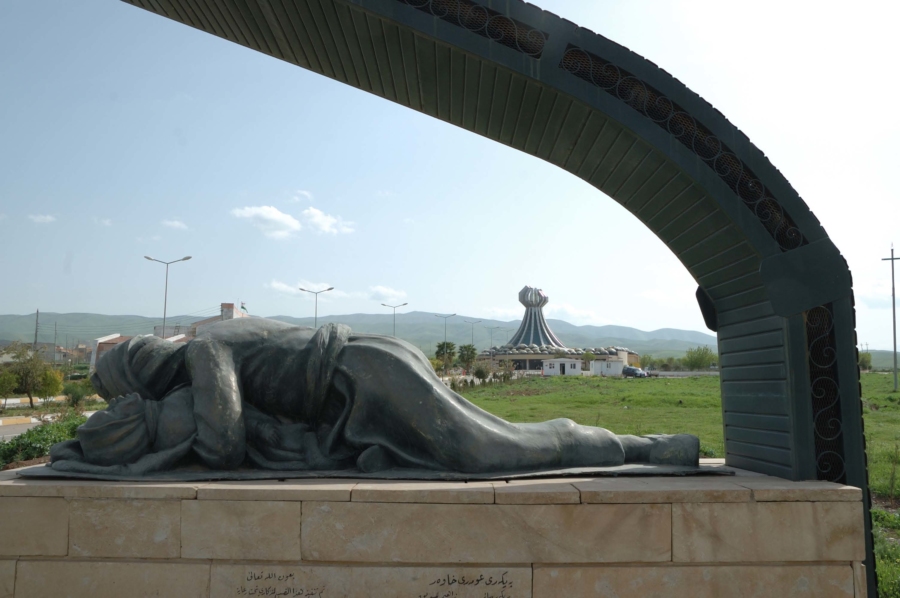What distinguishes these architectural elements is their use of decorations and secondary details that reflect the artistic taste of the Mosulis, which led to the fame of several crafts, including sculptors and skilled items that are skilled in the formation and sculpting process. In general, the decorations are of three basic types. The first is organic and refers to the use of plant shapes (especially the chamomile flower, which is locally known as the baboon) with a move away from direct embodiment to represent animal shapes for the prohibition of embodiment in the Islamic religion, and the second type of decoration is geometric, which is a direct reflection of arabesque art. Basic geometric shapes such as triangles, circles, and squares are used with compound shapes to decorate entrances and other architectural elements, and the third type is the use of Arabic calligraphy in different styles to write verses from the Qur’an or prophetic hadiths.
Pattern — Decorations at the entrances to ancient Mosul
 © سحر محمد خروفة- ابواب موصلية
© سحر محمد خروفة- ابواب موصلية
 © صمم في العراق Designed in Irak
© صمم في العراق Designed in Irak
What distinguishes the old city of Mosul is the religious and ethnic type in it, which reflects a state of coexistence and tolerance in it, and this diversity is reflected in the use of symbols and details that reflect the cultural and religious backgrounds of these groups on the facades, especially on the entrances. On some religious texts using the Hebrew alphabet, while we see the use of cross and triangulation symbols on churches, monasteries and some residences for Christians in Old Mosul, and on the other hand we see the use of plant motifs and Quranic verses on mosques and some other religious buildings.








